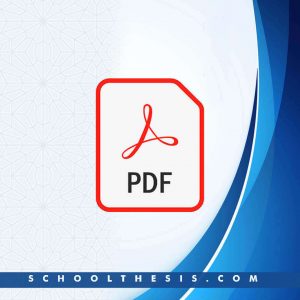
Human Resource Planning and Organizational Productivity
Chapter One of Human Resource Planning and Organizational Productivity
INTRODUCTION
Background to the Study
The concept of Human Resource Planning in any organization is an issue which deserves attention because it constitutes a major focus on the objective of an organization which is meant to foster effectiveness in the collective use of human talents for the overall benefit and interest of the employee and the organization . Consequently, for any organization to survive the changing needs in manpower utilization acquisition from excessive labor turnover low productivity, it has become paramount to imbibe a vibrant Human Resource Planning strategy by closely forecasting the present and future levels of employees required for its sustainability in the rapid changing society.
Human resource planning is defined as the process of assessing an organizational human resources needs in the light of organizational goals and changing conditions and making plans to ensure that a competent stable work force is employed and retained. However the actual planning process will vary a great deal from one organization to another. Even though various definitions of human resource planning have been given by some schools of thought such as James Walker, Pattern, and Fayana ( 2002 ) , however, it is a broad process addressing multiple levels of increasing organization effectiveness on the management of Human Resources and people management.
The term people management embraces the two related concepts of human resource management (HRM) and human capital management (HCM). HRM aims to ensure that the organization obtains and retains the skilled, committed and well- motivated work force it needs. This means taking steps to access and satisfy future people needs and to develop their inherent capacities, potentials and employability.
The process of HCM is closely associated with human resource management. However the focus is more on the use of metrics (measurements of HR and people performance) as a means of providing guidance on people management, strategy and practice.
Consequently against this background, this project is determined to further expose you to those aspects of human resource planning especially as it relates to a Research and Academic Institution such as the National Water Resources Institute in Kaduna, Nigeria. This project seek to deal specially with the meaning, need, importance and process of human resource planning.
Statement of the Research Problem
This study is concerned with the human resource planning and productivity issue in an institution and to further identify how human resource planning effectively contributes to the attainment of its objectives in the National Water Resources Institute, Kaduna. It is worthy of note that research activities, periodic scientific journals or publications of the National Water Resources Institute, Kaduna have not rendered much impact over the years on the overall abundant water resources of the nation Nigeria which could be attributed to constrains in the aspect of a vibrant personnel management policy or deficiency of a sound human resource planning programme which might have been contributory to the resultant consequential effects on the overall targeted performance of the organization. Hopefully, it is the desire of this study to investigate the immediate and long time problems which could have militated on the low output in the institute and to further make a positive impact on the attainment of higher productivity in consolidating its human resource planning.
Purpose / Objective of the Study
The purpose of this study is to examine human resource planning and its impact on the organizational productivity, using the National Water Resources Institute, Kaduna as a case study with focus on the following objectives;
a. To identify the methods and stages of human resource planning being adopted by the institute.
b. To determine the impact of human resource planning on the organizational productivity.
Research Questions
This research study is aimed at asking why the organizational impact in productivity of the National Water Research Institute is not very much felt in water delivery and control across the country Nigeria despite the large potential of water resources and huge financial investment by governments over the years.
1. What are the methods and stages of human resource planning being adopted by the National Water Research Institute, Kaduna?.
2. What are the impacts of human resource planning on the organizational productivity?
Hypotheses
The research intends to seek explanation for the phenomenon required for test as shown below.
H0: Human resource planning has no impact on workers productivity.
HA: Human resource planning has impact on workers productivity.
Significance of the Study
The study will potentially serve as a reference point to the human resource strategies of the National Water Resource Institute in its drive towards achieving excellence in service delivery and effective, productive personnel management structure. It is also expected to be a rallying point for other human resource managers who may wish to carry out a study of the institute and its productivity concept.
Another significance of this study would be as a guide to students of human resource management who may wish to undertake a project study of the institute or any other organization of interest, and to other researchers in the field of human resource management.
Also it is a prerequisite for the award of Post Graduate Diploma (PGD) in Human Resource Management. Organizations both private and public sectors will also benefit from findings of this study. This study undertaken by the researcher on the human resource planning and productivity of the National Water Resources Institute, Mando, in Kaduna will be of outmost importance not only to the researcher but to the organization under study which is expected to generate future strategies from the findings.
